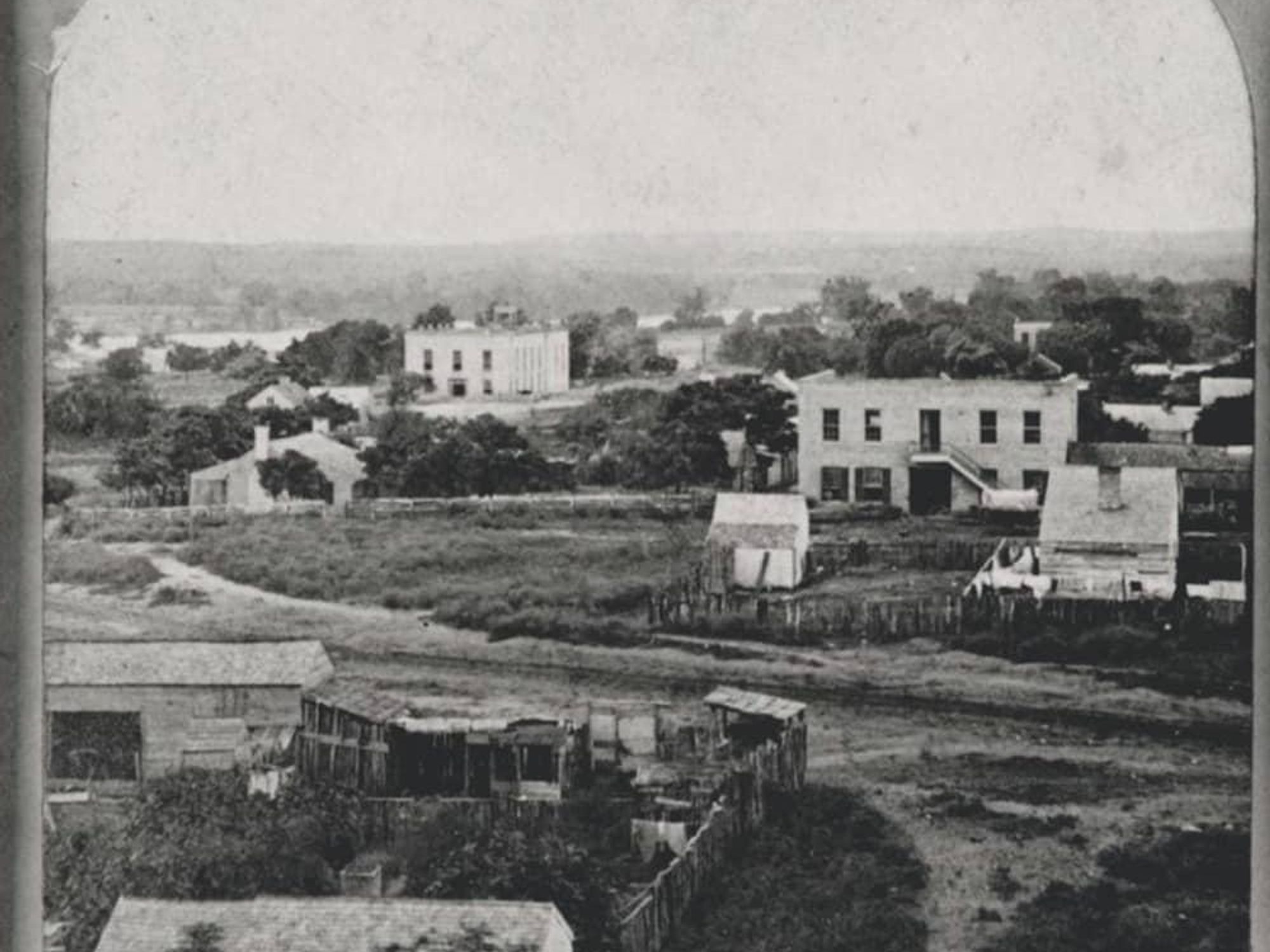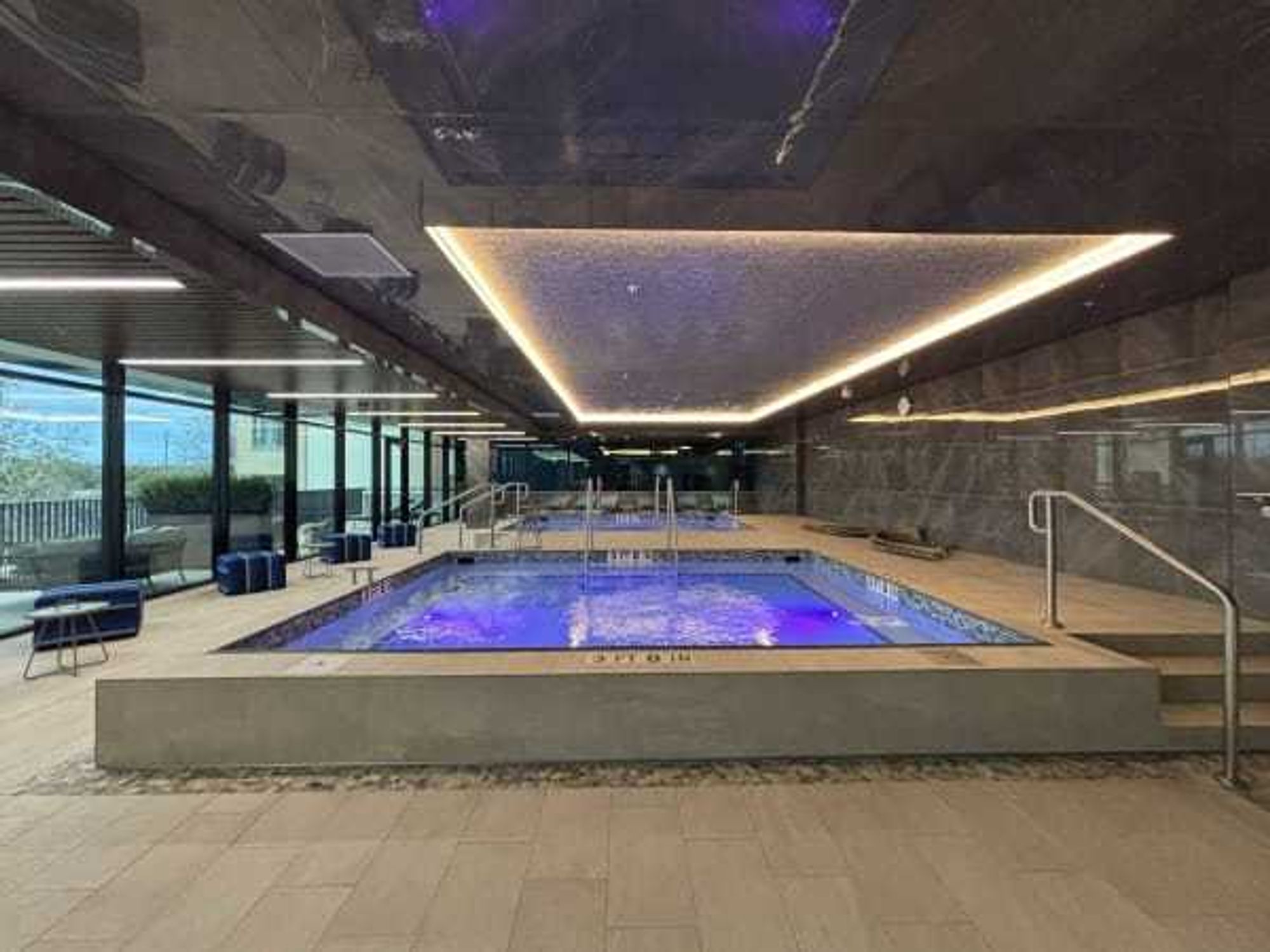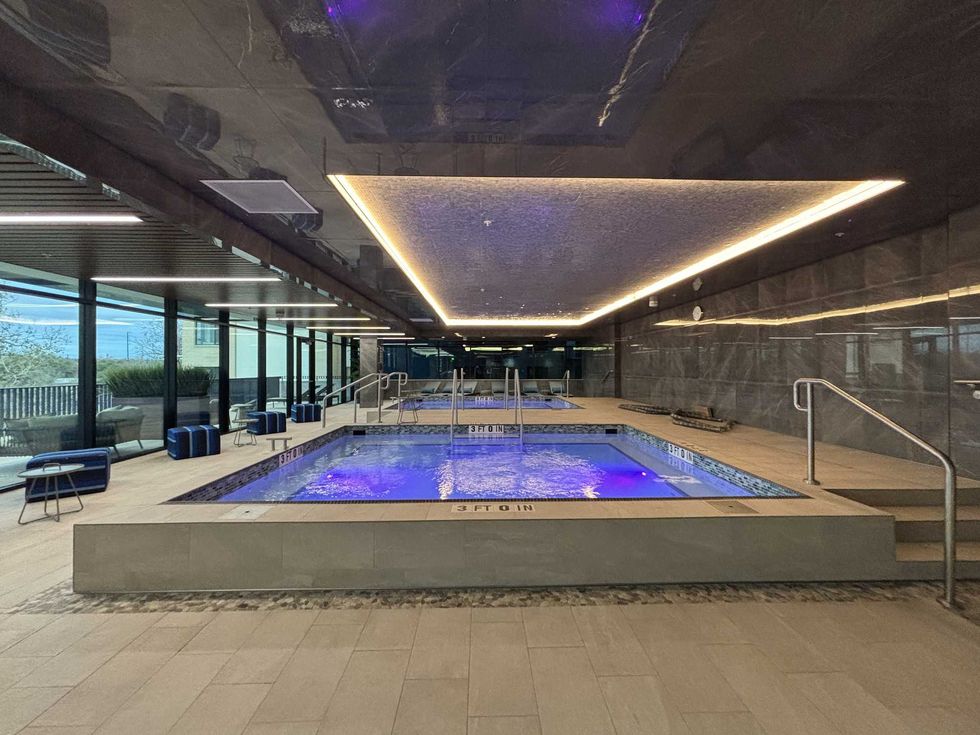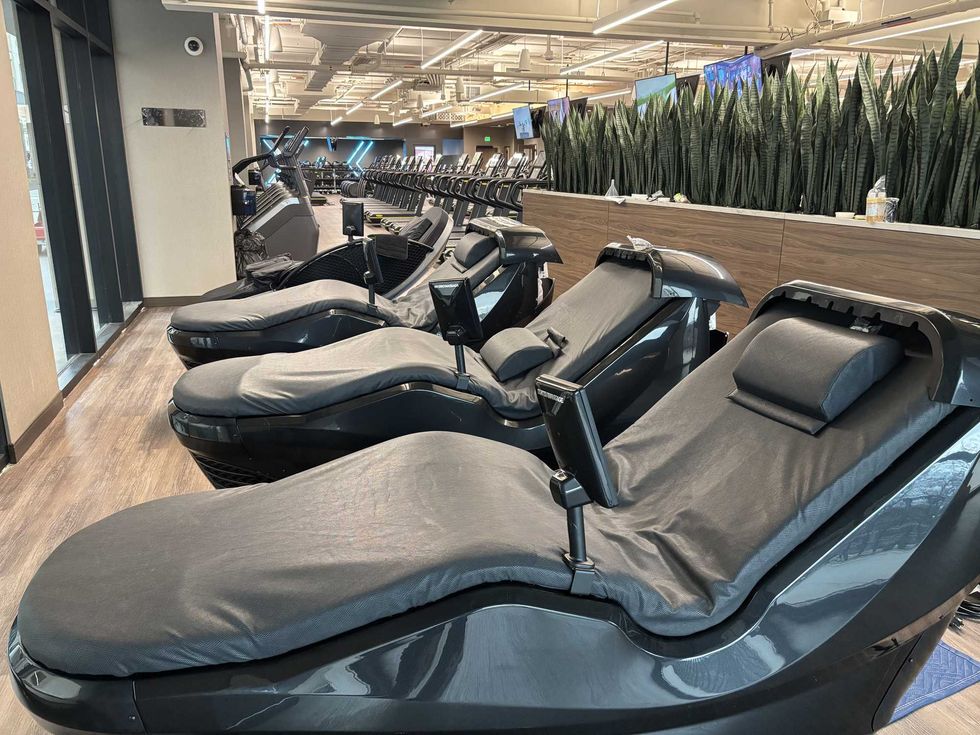History of Austin
This tiny downtown Austin park had a mighty impact on the city's history

Republic Square is a relatively small park, just one acre, but it's a vital part of Austin life. The square's prominent downtown location between Guadalupe and San Antonio streets and Fourth and Fifth streets make it a prime location for activities such as weekly farmers markets, concerts, free yoga classes, and even an upcoming restaurant.
Though small, the park has a mighty history. Over the past 180 years, Republic Square has been the rumored birthplace of Tex-Mex; an auction site; and a parking lot, among many other things.
On the auction block
In 1839, Mirabeau Lamar first stepped foot in Central Texas and declared, "this would be the seat of a great empire," thanks to its beauty, abundant natural resources, and central location. Republic Square Park became an important part of Austin's history as early as August 1, 1839, when 306 city lots were officially auctioned off in present-day Republic Square under historic oak trees, now referred to as Auction Oaks.
Republic Square became part of the downtown fabric in 1888, when Edwin Waller came to Austin (then known as Waterloo) to layout a city grid consisting of one main/Capitol square, and four smaller squares: Hemphill (presently First Baptist Church), Bell (now called Wooldridge after civic leader and former Austin Mayor Alexander Wooldridge), Hamilton (now Republic Square), and Brush.
Neighborhood changes
In the 1870s, Mexican immigrants began moving to the downtown area, primarily south and west of Hamilton Square. The community held celebrations in the space, and it eventually became popular for food vendors selling tamales and candy to residents.
Just across from the square was Austin's largest business at the time: Walker's Austex Chili Factory located at 500-502 West Third St. Formed in 1910, the company was famous for owning the world's only automated tamale-making device. (Walker's eventually merged with Dallas' Frito-Lay in 1961.)
During Walker's Austex Chili Factory's tenure, the nearby square had a variety of nicknames, including Guadalupe Square, Mexico Square, or Chili Square. Vendors would sell tamales, chili, and other dishes in the neighborhood, while Mexican candies and tamales were sold on Congress Avenue.
When TexMex (no hyphen) was popularized, the term represented the Texas and Mexican Railroad route, established in 1875. By the 1920s, journalists co-opted the term to refer to the burgeoning cuisine and added the hyphen. The term ran in newspapers around the world, thus becoming Tex-Mex. While the food has origins in our neighbor city of San Antonio, Chili Square is also given credit for introducing the cuisine to a global audience.
Dorment for decades
After lively origins, the square became less and less popular as residents began to leave for other areas. Nearby homes were converted into ice houses, car lots, lumber, and printing companies. By 1950, the square had become a parking lot.
In 1976, the Bicentennial was being celebrated across the country, and Austinites were swept up in patriotism. During that time, Hamilton Square once again became a green space (a project that had been in the works by the local parks department and Sierra Club since 1974), sparking renewed attention on the park-turned-parking lot. New names were proposed for the square, and a Lion's Club submission, Republic Square, was chosen in honor of the Republic of Texas.
Implementing park renovations
Beginning in 2007, the vision for Republic Square was publicly announced with the first phase of renovations kicking off three years later. Led by Design Workshop, a firm hired by Austin Parks and Recreation Department, a master plan was completed in 2013, the same year the Texas Legislature approved a 99-year lease for three downtown parks, including Republic Square.
In 2016, construction began on the square led by Austin Parks Foundation, which also oversaw the capital campaign to close the funding gap ($3.5 million) of the $5.9 million goal. In October 2017, Republic Square reopened to the public with the Downtown Austin Alliance overseeing the ongoing programming, operations, and maintenance. Today, the square serves as a gathering space and public transit hub for an increasing number of downtown residents, employees, and tourists.
Ultimately, however, this peaceful parcel of land at 422 Guadalupe St. is a reminder of Austin's storied past. Celebrate this past in-person on August 3, during Austin's Second Annual Birthday Bash, an official grand re-opening celebration. For more information on this free, family-friendly day, head here.

 Pilates is one of the many modalities on the schedule.Photo courtesy of Life Time
Pilates is one of the many modalities on the schedule.Photo courtesy of Life Time


 This giant sauna doubles as a social amenity.Photo courtesy of Life Time
This giant sauna doubles as a social amenity.Photo courtesy of Life Time The Life Time Lounge offers another place to hang out.Photo courtesy of Life Time
The Life Time Lounge offers another place to hang out.Photo courtesy of Life Time